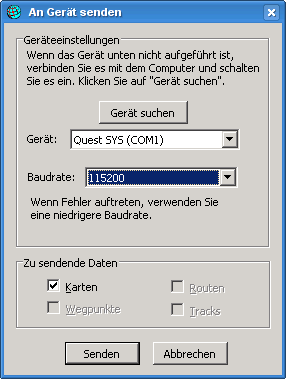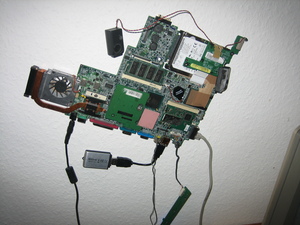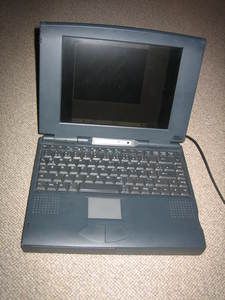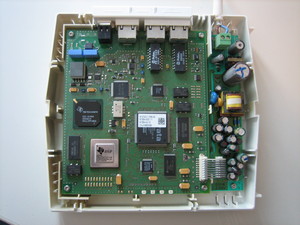Entries tagged as hardware
1und1 bios dmidecode linux lspci motherboard pciids support 3d aiglx blob compiz driver freesoftware gentoo graphics metacity nouveau nvidia opengl xgl xorg atm dsl ntbba benchmark cd dvd harddisk lenovo mod optiarc performance sata ssd t61 thinkpad eltorito grub iso memdisk syslinux cardreader memorystick notebook pcmcia ricoh samsung sd sdricohcs cedric copyright corruptibles creativecommons film freeculture freifunk iromance laptop modding p30 server vlc webradio wlan yacy debian apt chromium cryptography cve deb distributions fedora firefox fma86t ghost glibc gnupg gpg openpgp packagemanagement pgp php redhat rpm security signatures ubuntu vulnerability websecurity display energiesparen klimaschutz ökologie router strom stromverbrauch umweltschutz lug musik tuxmas energie energiesparlampe kompaktleuchtstoffröhre led marslight stromsparen umwelt xq 23c3 27c3 3ddrucker adobe amusementpark asia ati backnang base64 bash beijing berlin beryl bonn bufferoverflow camera canon ccc cellular chdk chemnitz china cinderella cinelerra clt code codecs compizfusion composite compression console csrf css ddwrt desktop developingworld digitalcamera disney disneyland evince exe fake ffmpeg firmware france freewvs freiegesellschaft frequencies frequency froscon froscon2007 fsf fsfe gaia games gargoyle gimp gnome google googleearth gsm heartbleed homebrew ibm ico icons icoutils itu ixus jugendumweltbewegung jukss karlsruhe kde königswusterhausen kpdf lessig license lpi lpic lsusb messe microsoft mobilephones movie nancy nessus okular olpc openbsc openbts openexpo opensourceexpo openssl openstreetmap openvas osmocombb pdf phoronix poppler presse privacy rapidprototyping rar realmedia realvideo reprap retrogames reverseengineering rmll rv30 rv40 s9y science sciencefiction script serendipity sfd shellshock shijingshan siegburg simcity society softwarefreedomday sqlinjection stepmania sumatrapdf sunras talk theory thesource theunarchiver travel trip2011 unar usbids video videoediting web wii wiibrew wiki windows windowsrefund wiretapping wos wos4 wrestool xss bahn gedelitz murrhardt wendland wendlandcamp garmin geocaching geodaten gps mapsource quest routing wine entropia exif gebabbel geo geotagging gpsbabel gpx josm jpeg mobiletrailexplorer magnet neodym recycling smart smartmontools usb hddtemp lm_sensors ac100 android gatos ice modem p35 r300 radeon randr12 smartbook steckdose subnotebook toshiba tv tvout winmodem x1carbon 4k addresssanitizer apache artikel asan assembler augsburg augsburgerallgemeine c cacert ccwn clang come2linux core coredump cpu cpufreq crash darmstadt delilinux demoscene distribution drm english essen esslingen frankreich freedesktop gadgets gammu gcc gnokii gphoto gpn gpn5 grsecurity gtk hacker hash howto hp http inkscape installparty iptables kgtk kubuntu libressl lit07 ludwigsburg luga lugbk macos mandriva md5 memorysafety metisse mobile mplayer mrmcd mrmcd101b multimedia network nokia omnibook openbsd overheatd overheating passwörter pcmagazin programming proxy ptp qt schokokeks segfault sha1 sncf squid ssl standards symlink time tls unicode usability useafterfree utf-8 vc-1 vista vortrag waiblingen web20 webhosting webinale webroot webserver win32codecs wmv zeitung badcannstatt bnn c4 cannstatt cccs cctv datenschutz earth gpn7 kaisersbach mars media merkaartor osm osm2poly osmosis peterschaar planet press re-publica re-publica09 rp09 rtl spiegel stuttgart surveillance tomorrow überwachung überwachungskameras cablemodem climate d-link ecology efficiency eletricity environment firewall kabeldeutschland o2 ökostrom tcp zyxel energietisch energiewende klima klimacamp slides stromnetz stromrechnung wachstum wirtschaftswachstum napster di gvl kultur musikindustrie netradio savenetradio usa faithfighter flash gnash molleindustria religion religionskritik swfdec hotline köln vodafone
 There are two tools out there for Linux to put Garmin maps (which you can convert from OpenStreetMap Data) on devices, sendmap (proprietary) and qlandkarte (free). Sadly, both don't support my device (Garmin Quest), so I had to find an alternative solution. This should also work with other garmin devices.
There are two tools out there for Linux to put Garmin maps (which you can convert from OpenStreetMap Data) on devices, sendmap (proprietary) and qlandkarte (free). Sadly, both don't support my device (Garmin Quest), so I had to find an alternative solution. This should also work with other garmin devices.

